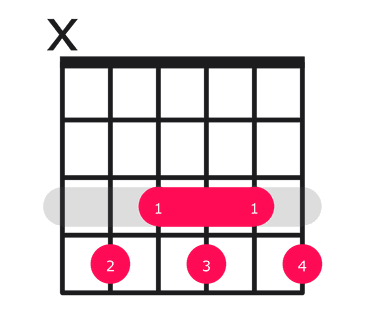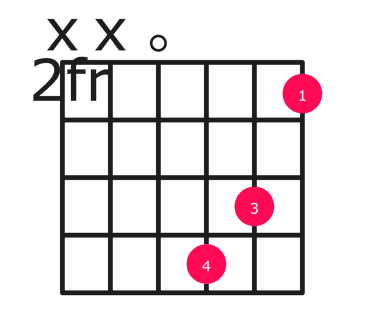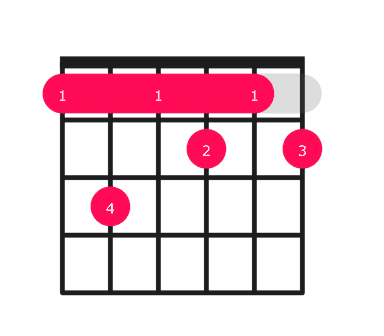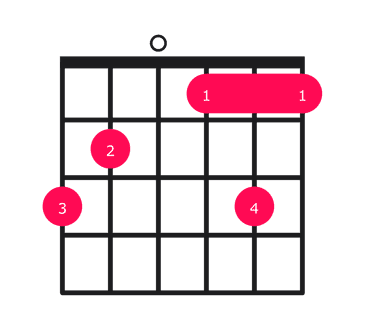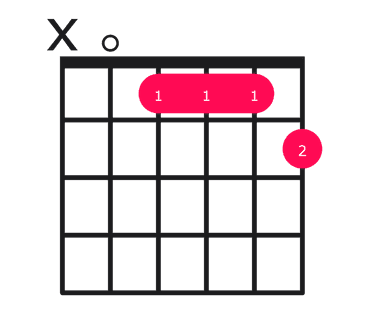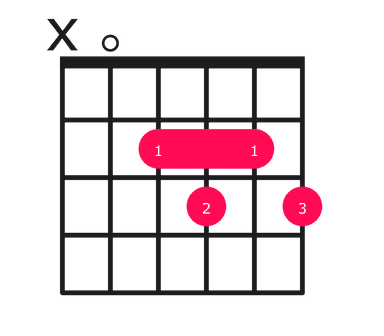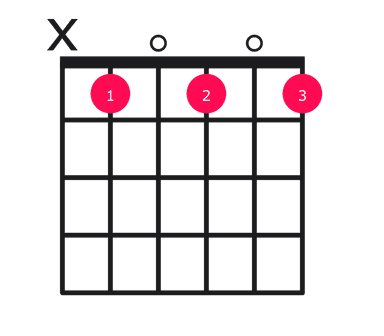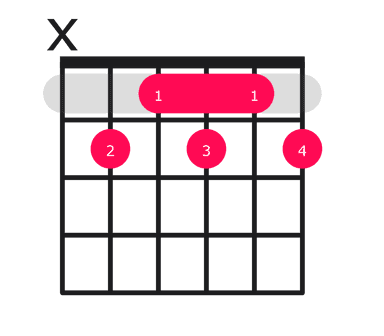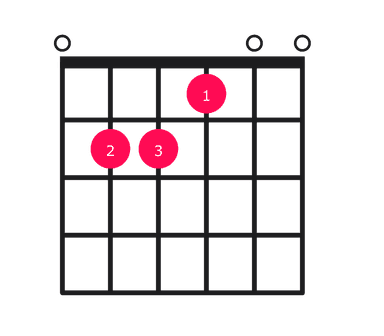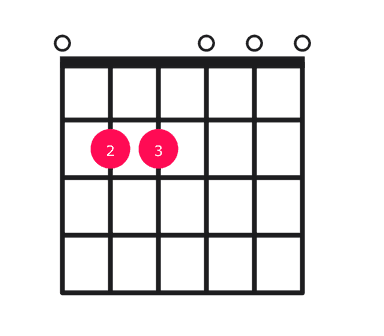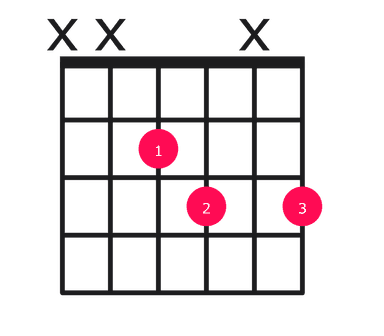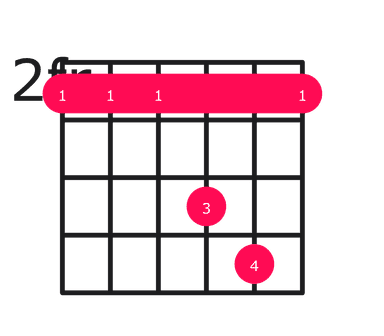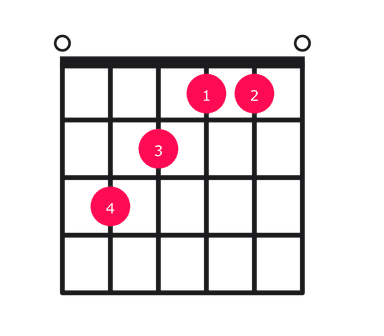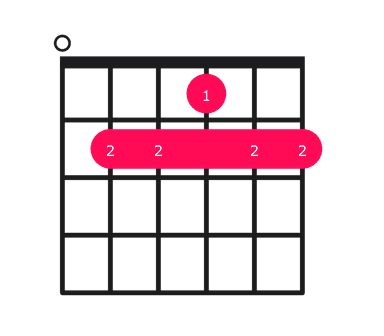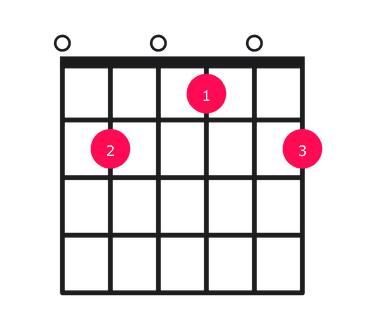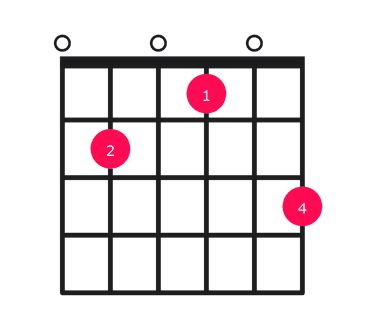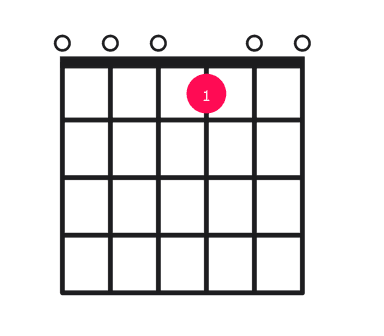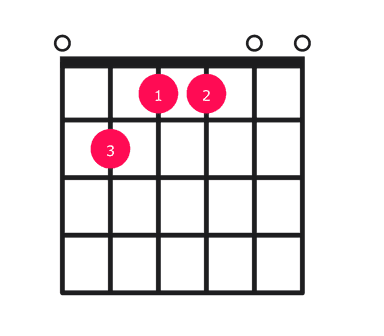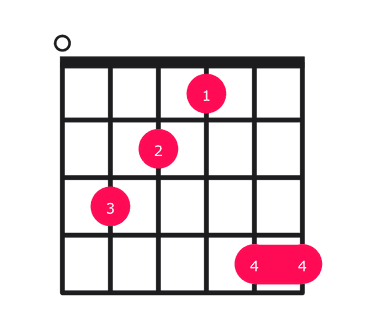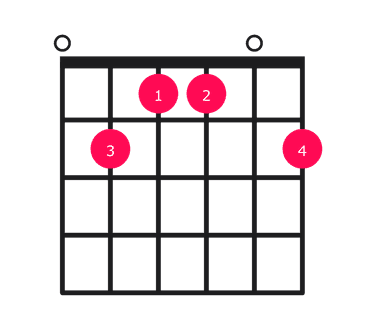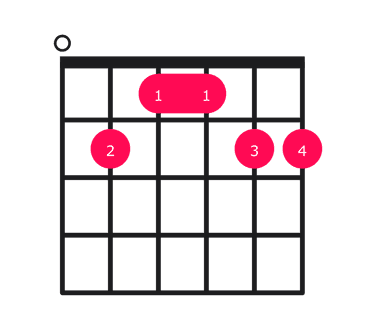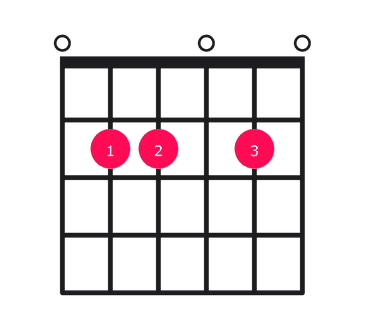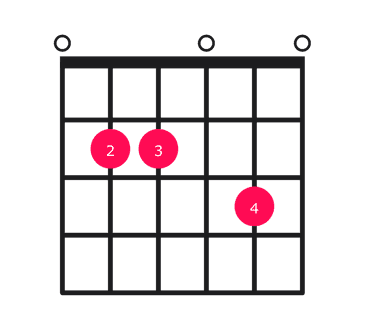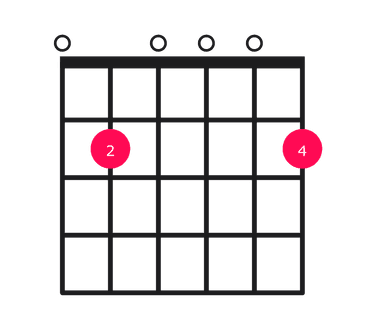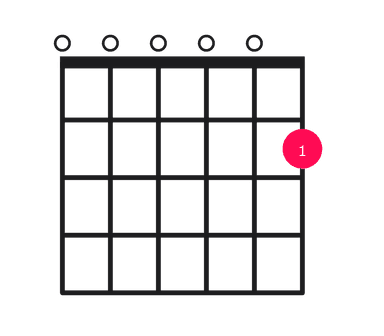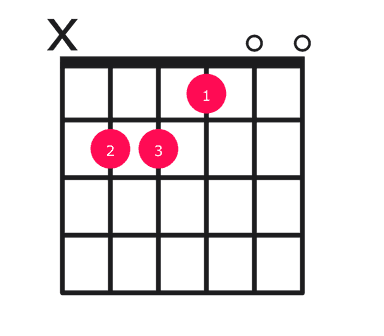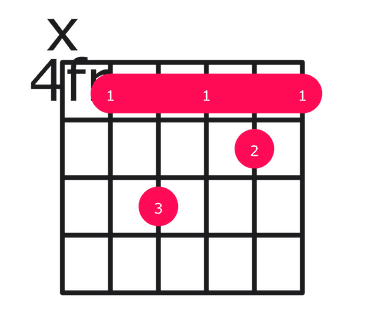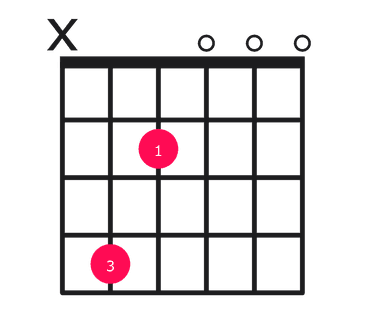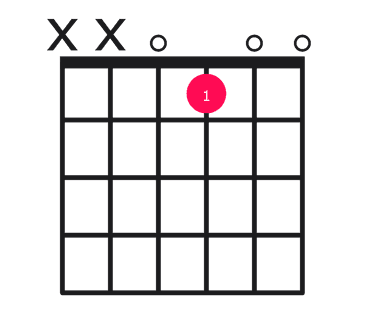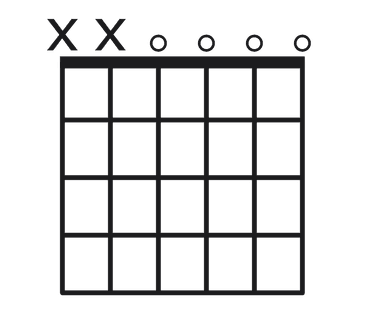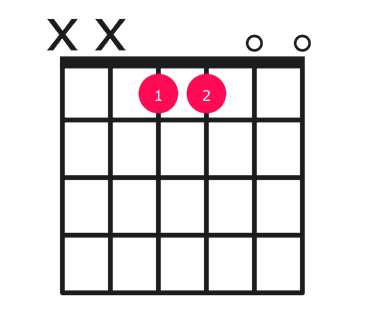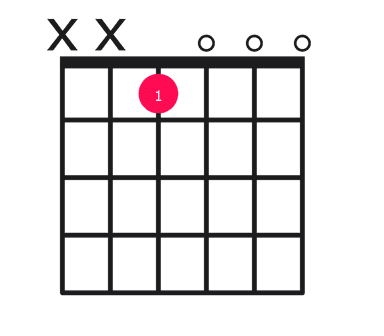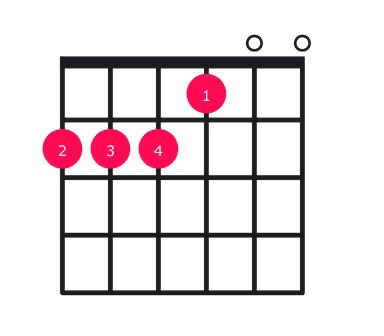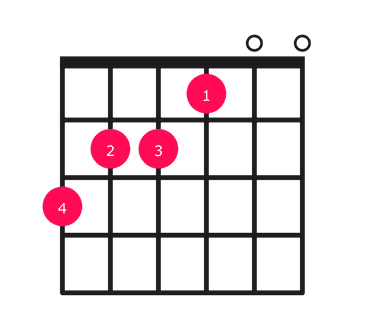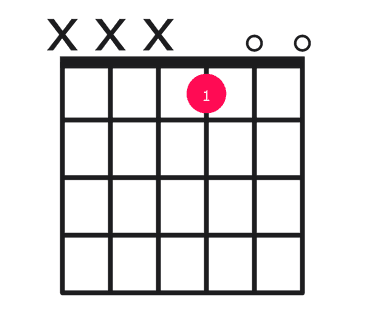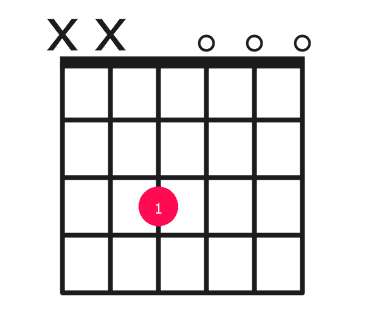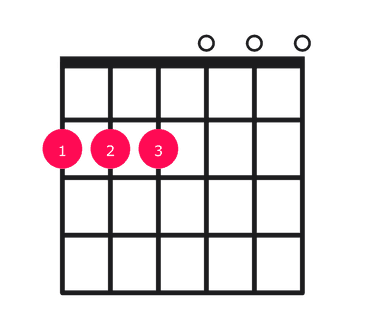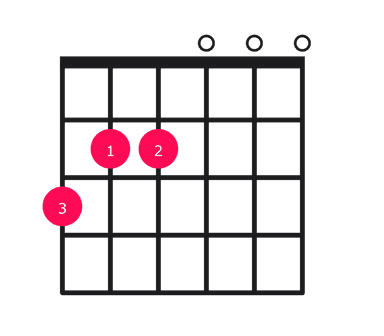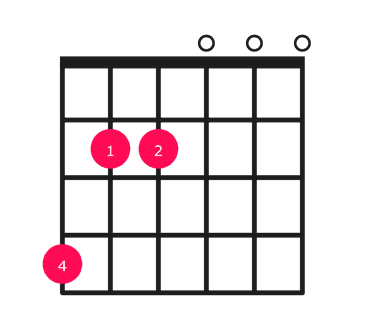How to play the E7b9 chord on guitar
Spice up your playing with this essential chord, used in hits like "Purple Haze."
The E7b9 chord
The E7b9 chord, pronounced "E dominant flat ninth," is a jazzy and bluesy variation of the E dominant seventh chord. It features an added flat ninth note, creating a tense and dissonant sound. This chord is commonly used in blues, jazz, and funk music to add a sophisticated and edgy flavor to progressions, and can be heard in songs like "Purple Haze" by Jimi Hendrix.
There are many ways to play a chord. Here's a diagram for the most common E7b9 chord. We've also included other versions below.

Unlock your playing potential in online guitar lessons with experts on Til. Start today and achieve your guitar goals quickly. Find a top-rated teacher.
Finger placement for E7b9 chord
The E7b9 chord is typically played as a barre chord on the 7th fret of the guitar.
Follow these finger positions to play a E7b9 chord on your guitar:
- Place your index finger across all six strings at the 7th fret, creating a barre.
- Place your middle finger on the 8th fret of the 3rd (G) string.
- Place your ring finger on the 9th fret of the 5th (A) string.
- Place your pinky finger on the 9th fret of the 4th (D) string.
Strum all six strings together to play the E7b9 chord, ensuring that each string rings out clearly.
How to play an easy E7b9 chord on guitar
If you're a beginner looking to play a simpler version of the E7b9 chord, try playing an E7 chord instead. An E7 is played with your first finger on the first fret of the G string, second finger on the second fret of the D string, and third finger on the second fret of the B string.
How to play a E7b9 bar chord
The E7b9 chord is more commonly played in an open voicing, so I don't feel confident providing detailed instructions on playing it as a barre chord without double checking the fingering. It's a less common voicing that beginning guitarists are unlikely to need.
Common E7b9 chord progressions
The E7b9 chord is often used in blues, jazz, and rock progressions to add tension and a sense of unresolved longing or grit. Some common chord progressions featuring E7b9 include:
- I - IV - I - V7 - IV - I - V7 - I (E7b9 - A7 - E7b9 - B7 - A7 - E7b9 - B7 - E7b9)
- I - IV - V7 (E7b9 - A7 - B7) Used in "Sweet Home Chicago" and "Rock Me Baby"
- I - VI7 - II7 - V7 (E7b9 - C#7 - F#7 - B7) Used in "Stormy Monday"
- I - II7 - V7 (E7b9 - F#7 - B7)
- I - bIII7 - IV7 - bVII7 (E7b9 - G7 - A7 - D7)
Drills to master the E7b9 chord
To master the E7b9 chord, try this simple drill: play each note of the chord individually, starting with the lowest and moving to the highest. Focus on producing a clear, crisp sound for each note. Once you can play each note cleanly, practice transitioning between them in a fluid motion.
Another effective drill is to practice the E7b9 chord in the context of a progression. Try playing a 12-bar blues progression in the key of E, using the E7b9 chord as the dominant seventh. This will help you develop muscle memory and seamlessly integrate the chord into your playing.
Unlock your playing potential in online guitar lessons with experts on Til. Start today and achieve your guitar goals quickly. Find a top-rated teacher.
Tayler K.
"I left Jude's class feeling much more confident in knowing how to make meaningful musical decisions. This class was always the highlight of my week and it was a blast getting to learn alongside other musicians seeking growth! Highly recommend!"
Songs that feature the E7b9 chord
Here are 10 popular songs you can play with the E7b9 chord.
- Round Midnight by Thelonious Monk (Ebm7, Dm7b5, Cm7, F7, Bbm7, E7b9, Am7b5, D7b9, Abm7, Db7, Gm7, C7b9, Fm7, Bb7, Am7, D7, Gm7, C7, Fm7, Bb7, Eb6)
- Crazy He Calls Me by Billie Holiday (Am7, Am6/G, Fmaj7, Dm7, E7b9, Am7, D7)
- Stormy Weather by Ethel Waters (G7, C7, F7, D7, G7, C7, F7, Dm7, Fm7, E7b9, Edim7, Am7, D7)
- Stardust by Hoagy Carmichael (G#maj7, F#7, B7, E7b9, A6, D#7, G#7, C#7, Emaj9, C7, Fmaj9)
- My Funny Valentine by Richard Rodgers (Em7, Am7, D7, Gmaj7, Bm7b5, E7b9, Am7, D7, Gmaj7, Bbdim7, Am7, D7, Gmaj7)
- Makin' Whoopee by Eddie Cantor (Cmaj7, Dm7, G7, Cmaj7, Dm7, G7, Cmaj7, Gm7, C7, Fmaj7, Fm7, E7b9, Am7, D9)
- My Man by Fanny Brice (C, A7, Dm7, Dm7/G, C/G, D7/F#, C/E, D7, Dm7, G7, C, Gm7, C7, F, Fm7, E7b9, Am7, Abdim7, Dm7, G7)
- The Masquerade Is Over by Russell Columbo (Cmaj7, Gm7, C7, Fmaj7, Fm7, C7, Fmaj7, D7, Gm7, Am7, Gm7, C7, F6, D7, Gm7, C7, Fmaj7, A7, Dm7, E7b9, Am7, D7, Dm7, G7, Em7, A7, Dm7, G7, C6)
- Cry Me A River by Julie London (Am7, E7b9, Am7, Cm7, F7, Bbmaj7, Bm7b5, E7b9, Am7, D7, Gmaj7)
- Moonlight In Vermont by Margaret Whiting (Gmaj7, Em7, E7b9, Am7, D7, Gmaj7, Abm7, Db7, Gbmaj7)
How a guitar teacher can help
If you feel stuck in your playing, it might help to take personalized guitar lessons with an expert guitarist. Taking lessons with a pro gives you access to the skills, feedback, and motivation to reach your goals.
You can find expert guitar teachers to support you in the journey. Thousands of people have turned to online guitar lessons on Til, instead of traditional in-person lessons, because Til gives you access to the best teachers in the world from the comfort of home. And with flexible scheduling, secure payments, lesson recordings, and a private chat with your teacher–there’s never been a better way to learn guitar.

